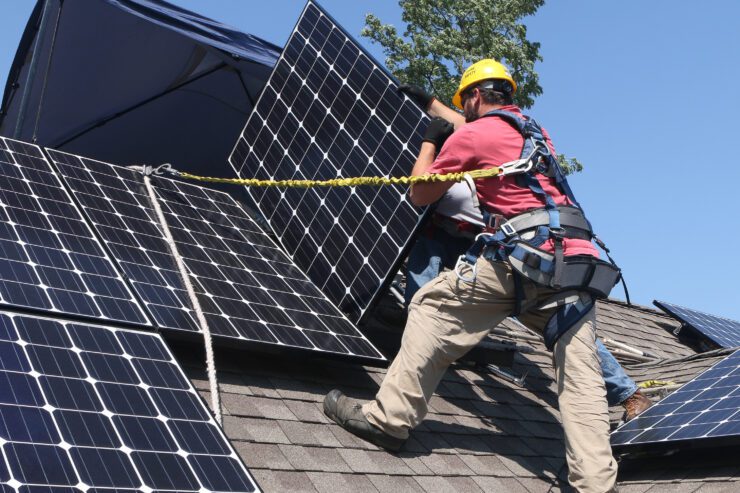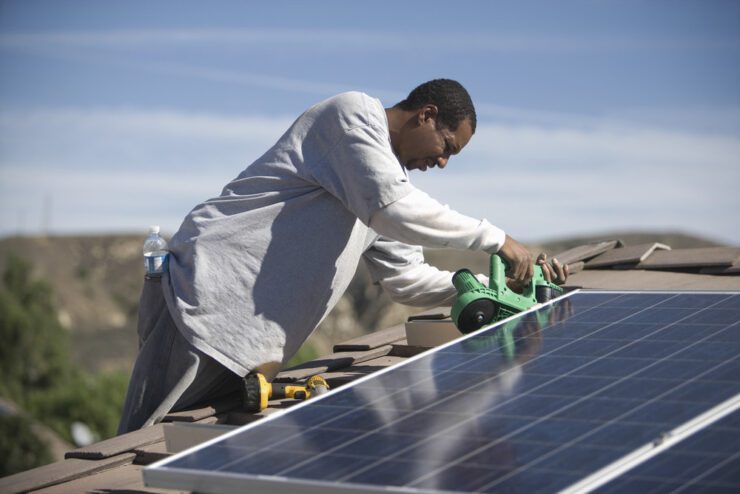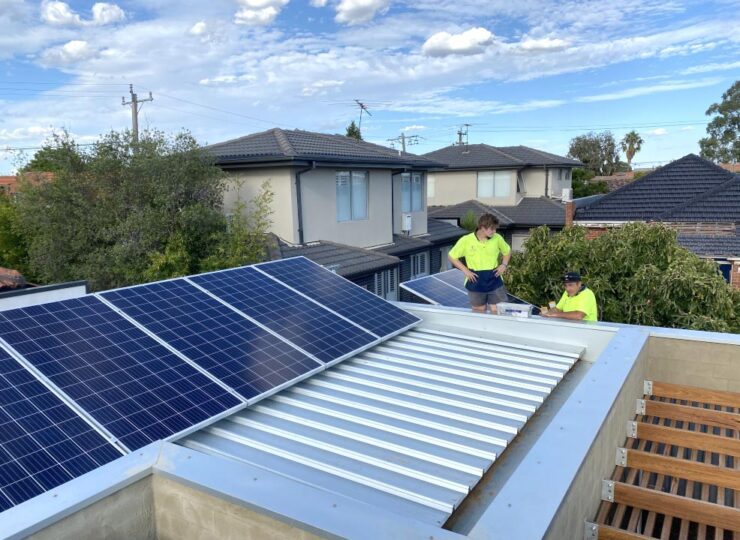There’s no doubt that with every day more and more people decide to go solar and to become homeowners who are all about preserving their environment while saving on electricity. If you wonder if solar power is worth it, we assure you that it is, but you need to be ready to invest in a system that will pay off in the future, and to install it properly, which demands certain knowledge and preparation.
When it comes to that step, you should know that there are five stages you need to go through before being able to actually use your solar system for powering your home. And we are going to lead you through them all in order for you to really understand what you have to do. This is our solar panel installation guide.
How to Install Solar Panels
The solar panel installation takes time, it’s not something that can be done in a day, even though most people believe exactly that. According to solar panel experts, it will be one to three months before you will be able to actually use the electricity generated from the sun to power up your appliances. Here is what the whole process should look like.
1. Engineering Site Visit

First things first. It is essential to make sure an engineer comes to your property to check and evaluate the electrical system at your home as soon as you sign your solar contract. He needs to make sure everything is compatible with the solar system you are ready to install.
If you hire a solar installer, there’s a huge chance the engineer will be his employee, which means his services will be included in the price, but he can also be an independent contractor if your installer doesn’t have one in his team.
After the expert checks your electricity status, he will move on to your roof in order to establish what is the condition it’s in, is it firm and structurally safe to welcome solar panels.
The next step will be going to the basement and checking your electrical panel, or more precisely, establishing whether or not it will need to be upgraded before the installation process begins. That means that the ampere capacity of your electrical panel will potentially have to be increased in the near future.
Bear in mind that this engineer visit is not the same as the initial visit from the installer when he comes to assess what size of a solar system you need, what is the size and angle of your home’s roof, etc. That’s the visit that happens before the contract is signed, and this one takes place after that moment.
Also, remember to check with this expert what is the solar panel direction by zip code, since this is one of the crucial pieces of information that can help you have the best possible solar installation.
2. Documents and Permits

You need to prepare yourself that there’s going to be a lot of paperwork you need to be familiar with in order to protect yourself and get the job done. Most of it will be tied to your installer, but there are other things too.
You will probably apply for state and federal incentives, clean energy financing, the local solar program, solar renewable energy certificates, etc., and you have to know what documents you need to own in order to go through these processes properly.
Also, there is a building permit you have to get to be able to install a solar system on top of your roof. Now, these permit requirements are determined by the specific place you live in, they can be very different, and you need to meet them all.
For example, in some states, there is a rule that says you have to have at least three feet of clear space on your roof that’s surrounding your solar panels, while others allow you to place your solar system across the entire surface of your roof.
You can ask your installer about all these things because he probably knows what demands and requirements in the state he works in primarily. He can also help you fill out the form and documents you need to submit. Bear in mind that all these processes can take a while, so be prepared to be patient. But if you are in a hurry then make sure to check on the progress of your paperwork.
3. Ordering the Equipment

After your paperwork is done, it is time to order the equipment you will need in order to set the entire solar construction up on your roof. This is the step your installer will take through his distributor, you won’t have to do it personally. But that means you already decided on what pieces of equipment you need, and that you went through the list of all main components.
You should know that there are two main parts you should think about thoroughly – the solar panel itself as well as an inverter and that their efficiency and their durability should be your main concerns. The installer will suggest some brands he believes are the best for you, the ones that are aligned with your budget, but you can always ask him about alternative solutions he thinks are good enough.
It is recommended that before talking to your solar installer, you do some research first, just to be familiar with the subject and to know what questions to ask. There’s a lot you can learn about solar panels for home on the Internet, and about how each component works. This will make you feel good and prepared for what’s coming next.
4. Installation
Installing solar panels takes some time, and it starts with roof preparation. Your solar installer will go up on it and check if all tiles are in order and properly attached to the roof construction. After that, he will place the electrical wiring that will make sure your solar panels are connected to your home power system.
This step cannot be rushed because whether or not your solar system will be working soon depends on how the wiring is done.
After that, the installer will position and install the racking that will support your solar panels. You should know that racking is the piece of equipment that will be attached to your roof, not solar panels. They go on top of it, under a certain angle.
The installer will check its safety before attaching a solar panel to it. The next step includes connecting solar panels to your inverter that will convert the DC power into the Ac power your home appliances can use.
It’s very unlikely that all this work can be done in a day. Usually, the installer will need two to three days to properly finish the job without hurry. But that mostly depends on the size of the solar system you are installing on top of your roof.
Now, bear in mind that the installer will need to spend on your property a couple of hours more if you want him also to install a power meter for the purpose of net metering.
5. Approval

Before you can put your system into work and generate solar energy for your home usage, you need to call a town government representative to come and inspect your system so he can finally approve it. His job is to be thorough and to check the work of your solar installer.
That means he needs to be sure the mounting was safely attached to the roof, that wiring is done correctly, and that everything is aligned with all standards.
After that, you will be able to move to an official grid interconnection. This step implies welcoming another inspector, this time from your local electrical company, who will do his own evaluation of the solar system and the work that’s been done regarding the wiring.
When he gives you the green light, your solar system can finally start working and producing electricity. You can expect all these procedures and inspections to last from two weeks to a month if everything goes smoothly and you are not faced with any problems along the way.
Conclusion
So if you were wondering how to install solar panels on the roof of your home, here is the answer. We tried to be thorough but not too detailed and boring, just so you can know what to expect and what are the basics you need to go through in order to place solar panels on your home and put them to work.
It is important to be aware of the fact that the whole procedure will take some time, on average one to three months, so that you don’t get surprised and disappointed with it taking so long.
First, there is the documentation and waiting for approvals and permits, and second, solar installers often have a full schedule, and you have to wait for them for a while. That’s why we recommend you to do the installation during the winter months when they are less busy in general.

